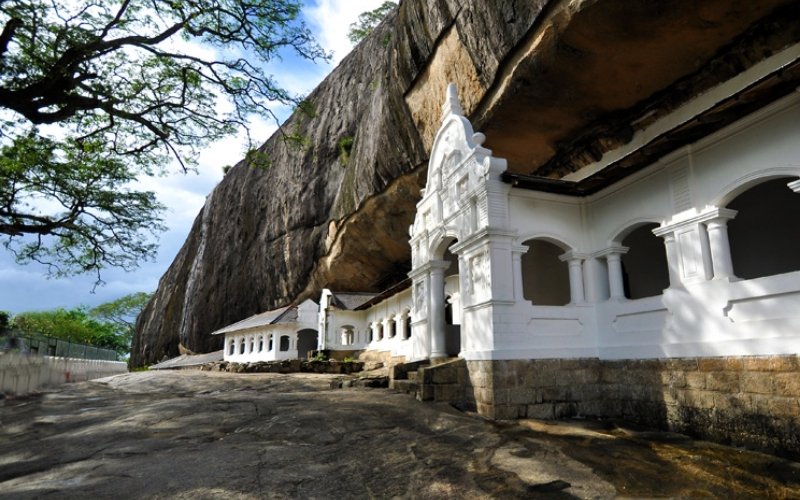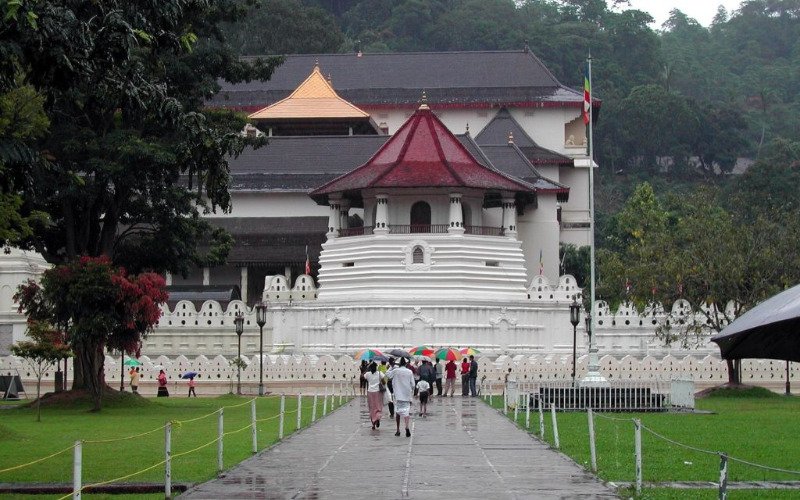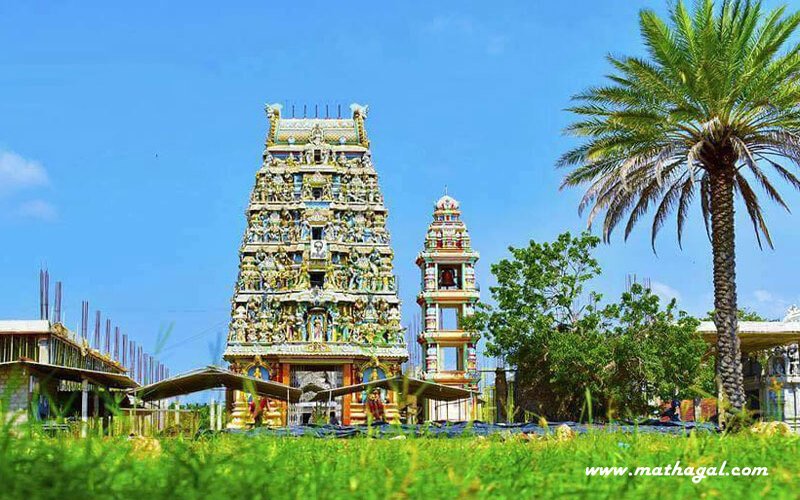About Dambulla Cave Temple
Dambulla Cave Temple, located in the Matale District in the heart of Sri Lanka, is one of the most significant religious and historical sites on the island. Situated 148 kilometers east of Colombo and 72 kilometers north of Kandy, this ancient temple complex sits atop a 150-meter-high rock and is renowned for being the world’s largest and best-preserved cave temple. In 1991, it was inscribed as a UNESCO World Heritage Site, further highlighting its importance on a global scale.
The site consists of five main caves that contain an impressive collection of Buddhist statues and paintings, offering a visual narrative of the life of Gautama Buddha. The paintings and statues cover various aspects of Buddhist history, and there are a total of 153 Buddha statues, alongside statues of Sri Lankan kings, Hindu gods, and other deities. It is a place that not only serves as a religious sanctuary but also as an archaeological treasure trove, showcasing the intersection of history, culture, and spirituality.
Location: Dambulla, Matale District, Sri Lanka
Coordinates: 7°51′24″N 80°38′57″E
Inscription: 1991 (15th Session)
Significance of Dambulla Cave Temple
Dambulla Cave Temple holds immense significance as a center of Sri Lankan Buddhism. The complex is believed to have been in continuous use since the 1st century BCE, with several additions and renovations over the centuries. The temple is a prime example of the Sri Lankan tradition of cave-temple architecture, where natural rock formations were adapted for religious purposes. Its spiritual importance is underscored by the vast number of Buddha statues, which represent various postures and expressions of the Buddha’s life and teachings.
The artwork in the caves is also of great historical value, with many of the paintings dating back to the 18th century, though the original frescoes were created even earlier. The presence of statues and inscriptions that depict not just the Buddha but also Hindu gods, such as Vishnu and Saman, further signifies the cultural and religious syncretism that has characterized the region for centuries.
Beyond its religious significance, the temple complex also offers insight into the prehistoric settlement of the region, as the caves surrounding the temple were once inhabited by early Sri Lankans long before the arrival of Buddhism. Thus, the site stands as a testament to the long history of human habitation and cultural evolution in Sri Lanka.
How to Reach Dambulla Cave Temple
Reaching the Dambulla Cave Temple is relatively easy. It is located approximately 148 kilometers east of Colombo, about a 2.5-hour drive. From Kandy, it is a 1.5-hour drive heading north. The temple is well-served by public transport, with buses running regularly from both Colombo and Kandy, making it easily accessible for tourists. Dambulla is also situated near the ancient fortress of Sigiriya, so many visitors often combine their visits to both sites in one trip. Once in Dambulla town, the temple complex is a short drive or walk from the town center, with clear signs guiding visitors to the site.
Cave Highlights
- Cave of the Divine King: This is the first cave in the Dambulla complex and dates back to the 1st century. The cave features 14 statues and an epigraph detailing its discovery. The paintings in this cave were last updated in the 20th century, showcasing the temple’s ongoing artistic development.
- Cave of the Great King: Known as the second-largest cave in the temple, this cave measures approximately 172 feet in length, 75 feet in width, and 21 feet in height. It houses 50 Buddha statues, each depicting the Buddha in various postures. In addition to the Buddha statues, this cave also features statues of the Hindu gods Vishnu and Saman.
- The Great New Temple: Separated from the Cave of the Great King by an ancient wall, this cave was originally used as a storeroom in the early 17th century. Measuring 90 feet in length, 81 feet in width, and 36 feet in height, this cave is distinguished by its ancient paintings that reflect the temple’s long history.
- The Western Temple: Known as the Western Temple, this cave is 56 feet in length, 27 feet in width, and 27 feet in height. It houses 80 statues of Lord Buddha, with the largest statue placed at the center. The unique design and grandeur of this statue make it stand out within the temple complex.
Conclusion
The Dambulla Cave Temple is a majestic and sacred site that offers a rare glimpse into Sri Lanka’s religious, cultural, and architectural history. With its vast collection of statues, vibrant frescoes, and historical significance, the temple provides not only a place of worship but also an educational experience for those interested in the evolution of Buddhism and ancient Sri Lankan civilization. The temple complex, perched atop a towering rock, is an awe-inspiring sight that continues to draw thousands of visitors each year, offering a spiritual sanctuary and a connection to the past. For anyone traveling to Sri Lanka, a visit to the Dambulla Cave Temple is an essential experience, offering both a spiritual journey and an opportunity to explore one of the country’s most cherished UNESCO World Heritage Sites.
Beat Tours near Dambulla
Discover the best tours in Sri Lanka, where every journey unveils a new wonder. Explore ancient ruins, lush tea plantations, golden beaches, and vibrant wildlife. Experience the magic of this tropical paradise like never before!
Best Hotels near Dambulla
Experience luxury and comfort at the best hotels in Sri Lanka. From serene beachfront resorts to charming hill-country retreats, enjoy world-class hospitality, stunning views, and unforgettable stays tailored to your every need.




